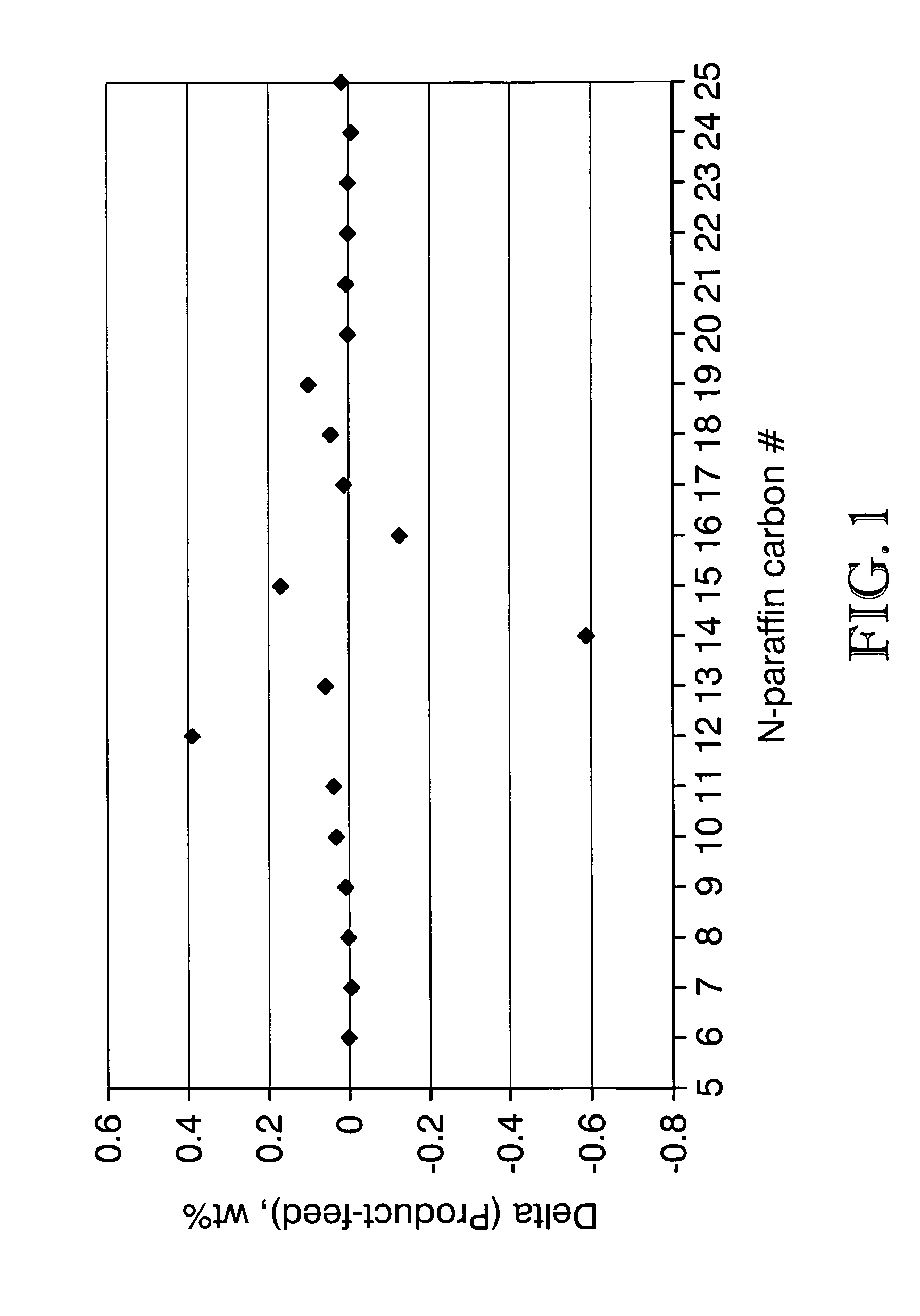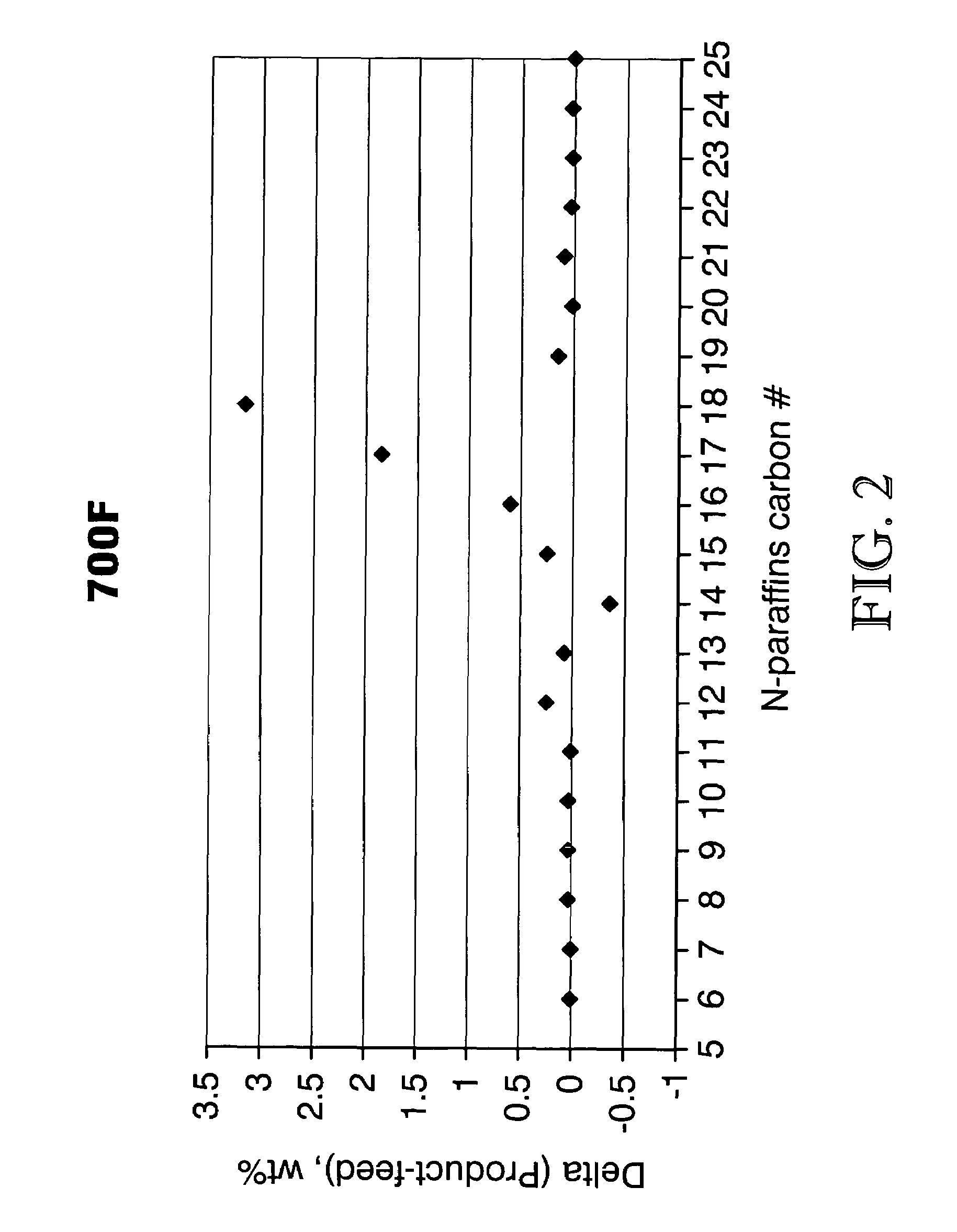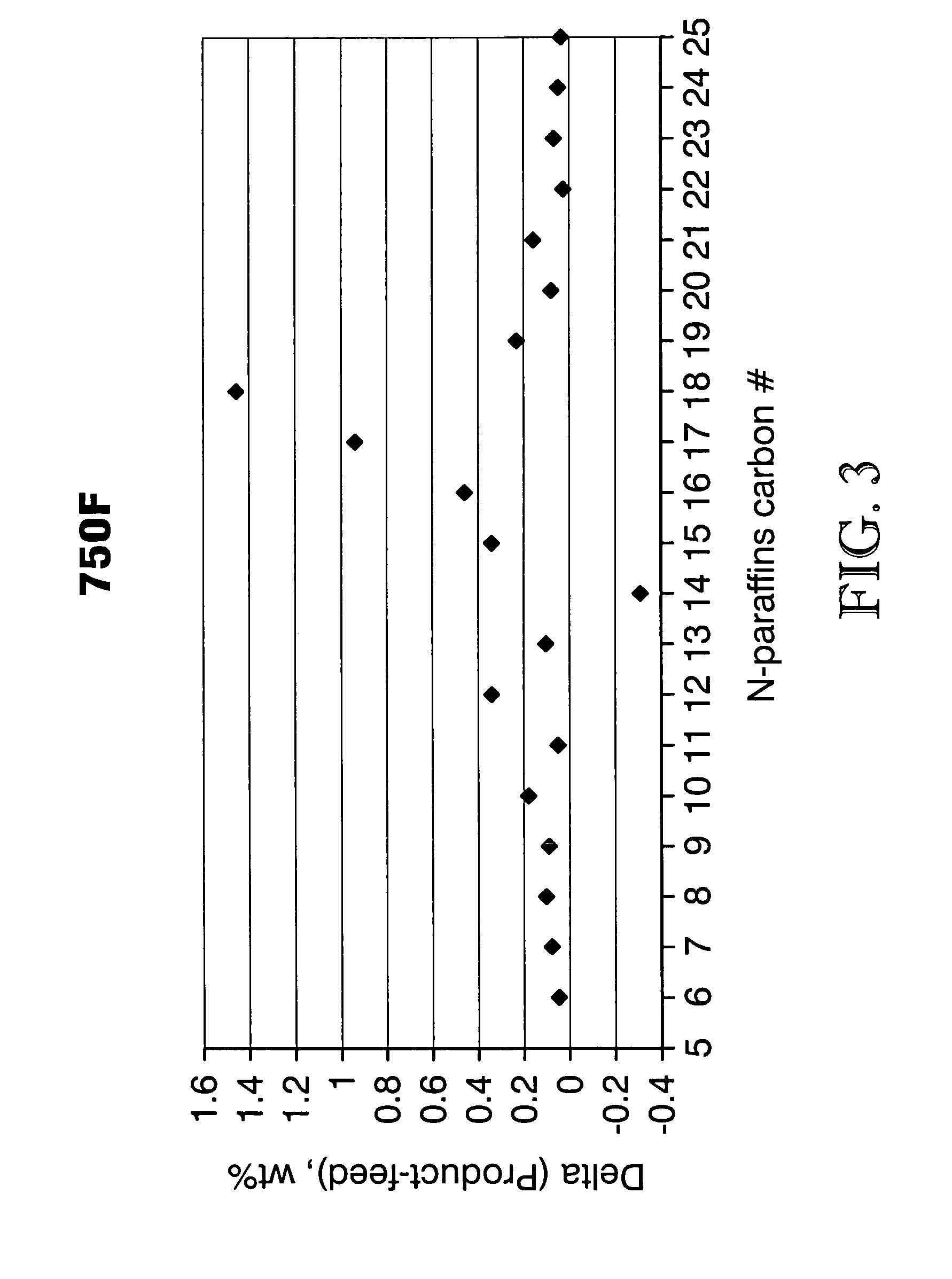Process for converting triglycerides to hydrocarbons
a technology of hydrocarbons and triglycerides, which is applied in the direction of hydrocarbon oil treatment products, fuels, biofuels, etc., can solve the problems of inability to flow, limit the use of bio-diesel in pure form in cold climates, and the cost effectiveness of bio-diesel as an alternative fuel has not yet been proven. , to achieve the effect of increasing the number of cetan
- Summary
- Abstract
- Description
- Claims
- Application Information
AI Technical Summary
Benefits of technology
Problems solved by technology
Method used
Image
Examples
example i
[0047]This example illustrates a process of converting triglyceride-containing materials to diesel boiling-range hydrocarbon products and properties of the products when produced in accordance with the present invention. This example specifically illustrates the effect of reaction conditions on the total acid number (TAN) of the product as well as the effect on hydrogen consumption.
[0048]As shown in Table I below, light cycle oil (LCO), and mixtures of LCO and various triglyceride-containing materials, including vegetable oil, yellow grease (derived from used restaurant cooking oil), and animal fat (specifically, beef fat) were co-fed with hydrogen through a fixed-bed, down flow reactor under hydrotreating conditions and employing a catalyst containing cobalt and molybdenum supported on Al2O3 (commercially available from Haldor Topsoe under the trade designation TK-574). The reaction conditions included an LHSV of 2 HR−1, an H2 flow rate of 1760 scf / b, and a temperature of 750° F. T...
example ii
[0051]This example illustrates a process of converting triglyceride-containing materials to diesel boiling-range hydrocarbon products and properties of the products when produced in accordance with the present invention. This example specifically illustrates improvement in cetane number for reaction products produced in accordance with the present invention.
[0052]As shown in Table II below, light cycle oil (LCO), and mixtures of LCO and various triglyceride-containing materials, including vegetable oil, yellow grease (derived from used restaurant cooking oil), and animal fat (specifically, beef fat) was co-fed with hydrogen through a fixed-bed, down flow reactor under hydrotreating conditions and employing a catalyst containing cobalt and molybdenum supported on Al2O3 (commercially available from Haldor Topsoe under the trade designation TK-574). The reaction conditions included an LHSV of 2 hr−1, an H2 flow rate of 1760 scf / b, and a temperature of 750° F. The pressure of the reacti...
example iii
[0055]This example illustrates a process of converting triglyceride-containing materials to diesel boiling-range hydrocarbon products and properties of the products when produced in accordance with the present invention. This example specifically illustrates the effect on sulfur removal for products produced in accordance with the present invention.
[0056]As shown in Table III below, light cycle oil (LCO), and mixtures of LCO and yellow grease (derived from used restaurant cooking oil) was co-fed with hydrogen through a fixed-bed, down flow reactor under hydrotreating conditions and employing a catalyst containing cobalt and molybdenum supported on Al2O3 (commercially available from Haldor Topsoe under the trade designation TK-574). The reaction conditions included an LHSV of 2 HR−1, and an H2 flow rate of 1760 scf / b. As shown in Table III below, both the LCO only feed and the 20% used restaurant oil / 80% LCO feed were run under identical reaction conditions but at temperatures of 650...
PUM
| Property | Measurement | Unit |
|---|---|---|
| temperature | aaaaa | aaaaa |
| temperature | aaaaa | aaaaa |
| pressure | aaaaa | aaaaa |
Abstract
Description
Claims
Application Information
 Login to View More
Login to View More - R&D
- Intellectual Property
- Life Sciences
- Materials
- Tech Scout
- Unparalleled Data Quality
- Higher Quality Content
- 60% Fewer Hallucinations
Browse by: Latest US Patents, China's latest patents, Technical Efficacy Thesaurus, Application Domain, Technology Topic, Popular Technical Reports.
© 2025 PatSnap. All rights reserved.Legal|Privacy policy|Modern Slavery Act Transparency Statement|Sitemap|About US| Contact US: help@patsnap.com



